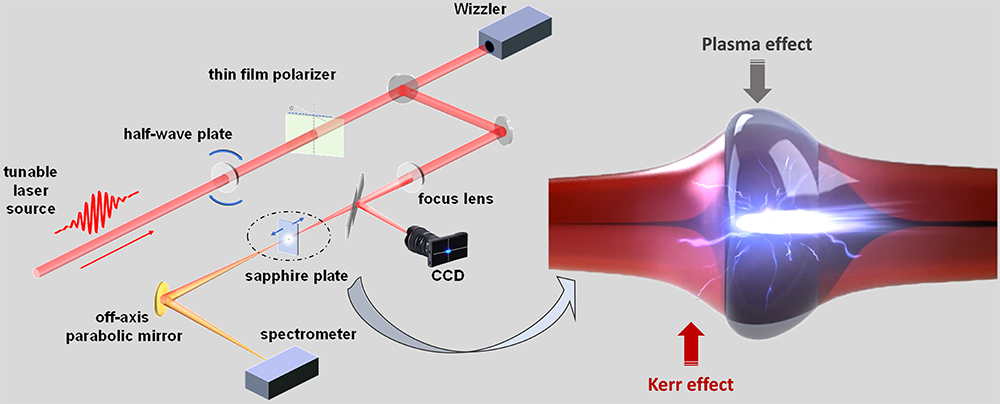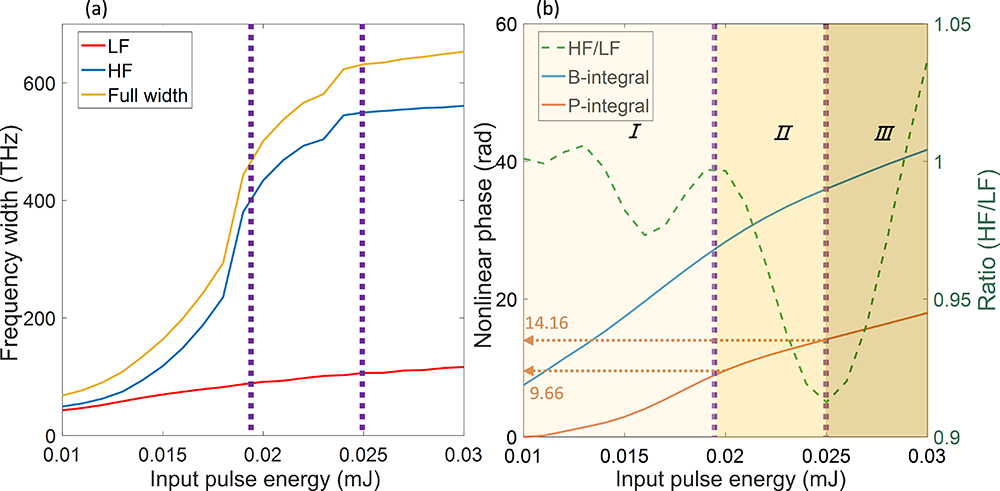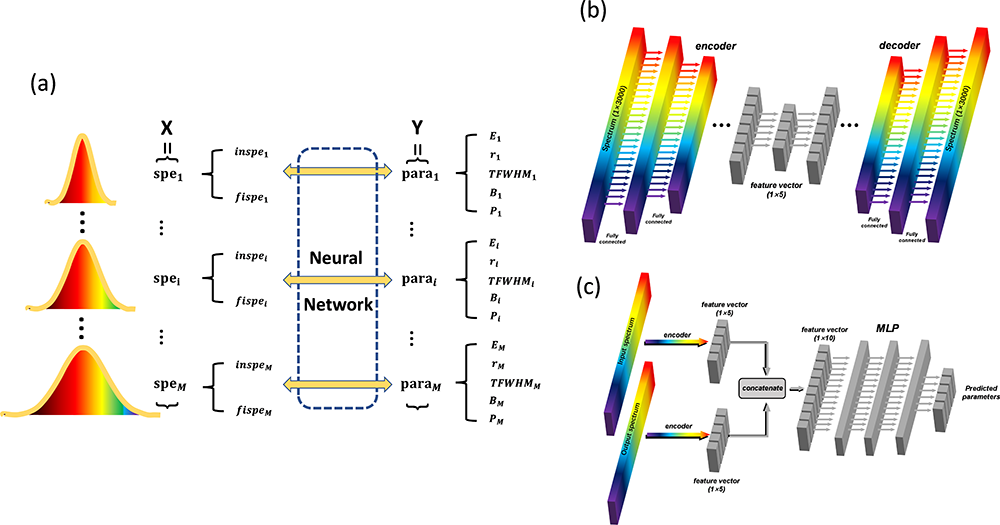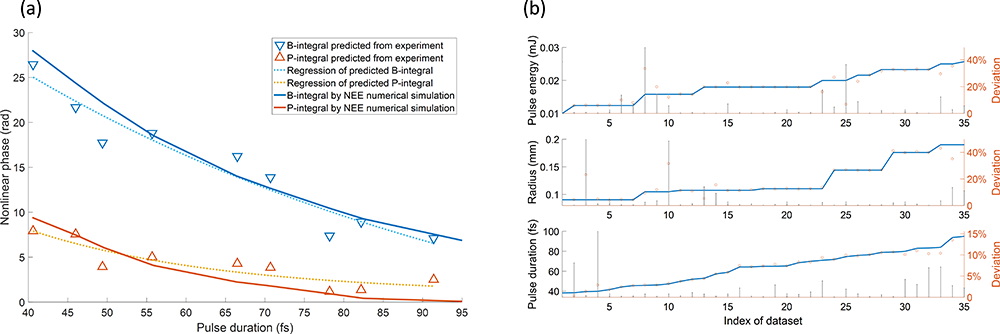Neural network quantifies P-integral in solids
Date:24-01-2022 Print
Observing the response of the laser field in the interaction between ultra-fast laser and matter is a powerful way to explore the ultra-fast physical mechanism in the process of interaction, especially in the strong field regime. A series of nonlinear effects take place as a laser pulse propagates in the medium, including Kerr effect (self-phase modulation and self-steepening), Raman effect, photoionization with the induced plasma effect. These effects change the spectral and temporal shape of the laser field so that the output spectrum contains information about nonlinear effects experienced by the laser pulse during propagation implicitly.
It is easy to measure spectra in experiments, but difficult to extract and analyze the nonlinearities behind. Firstly, various nonlinear effects are coupled with each other during the experiment, and the effect of a particular nonlinear effect cannot be investigated independently. Secondly, the spectral variation is complex, and there is no easy way to quantify the nonlinear effect and extract the corresponding physics from the spectrum. Thirdly, approximations are involved in the theoretical calculation, making it difficult to simulate the actual situation in experiments. At present, these nonlinear effects can only be characterized and analyzed theoretically by solving the nonlinear pulse propagation equation numerically, and experimental research can only provide qualitative analysis of the propagation process.
To solve these problems, recently Dr. GAO Yitan in the Institute of Physics, Chinese Academy of Sciences, under the joint guidance of Dr. ZHAO Kun and Prof. WEI Zhiyi, proposed the concept of ionization integral (P-int) to quantify the strength of plasma effect. By combining with the widely used B integral (B-int), the two main nonlinear effects in the spectral broadening process: Kerr effect and ionization effect, are investigated numerically and experimentally. The researchers took the ionization integral as a reference, analyzed the complex asymmetric broadening of spectrum during pulse propagation, and identified the different stages of the broadening process. They used the neural network algorithm to analyze the theoretical and experimental spectral results, which provides a more accurate understanding of the physics of the entangled nonlinear optics effects and a more convenient tool in the investigation of laser-matter interaction.
This is the first time that nonlinear effects are quantified in experiments, and its methods, including quantification of nonlinearities and the application of neural network algorithm, will bring great impact to the experimental study of ultrafast nonlinear physics. This study entitled "Quantification and Analysis of the Nonlinear Effects in Spectral Broadening through Solid Medium of Femtosecond Pulses by Neural Network" was published on Physical Review Research.
This paper was supported by the National Key Research and Development Program of China and the National Natural Science Foundation of China.

Cover figure

Fig.1 Stages in the complex asymmetric spectral broadening process identified by the ionization integral. (Image by Institute of Physics)

Fig.2 (a) Mapping between spectrum and laser parameters used for neural network training, (b) (c) the structures of the neural network. (Image by Institute of Physics)

Fig.3 Comparison of the prediction of B, P integrals and the initial pulse parameters based on neural network with experimental results. (Image by Institute of Physics)
Contact:
Kun Zhao
Email: zhaokun@iphy.ac.cn
Key word:
optical Kerr effect; photoionization; supercontinuum generation; nonlinear propagation equation; neural network;
Abstract:
Supercontinuum generation has been widely applied in laser spectroscopy and few-cycle pulse generation. It is composed of complex and unmeasurable nonlinear optical effects, which influence the final broadened spectrum markedly. To describe and characterize the two key processes, the Kerr effect and ionization, we employ two nonlinear integrals, including the common B integral for the Kerr effect and a P integral for ionization or plasma effect. With these integrals, the contributions of Kerr and plasma effects in the supercontinuum generation are identified and determined quantitatively. Then we utilize machine learning to construct a multilayer perceptron neural network to obtain the solution of the propagation equation for a femtosecond pulse in a solid medium. We employ supervised and unsupervised training with both experimental and simulation data to train the neural network for a better accuracy of the calculation. The trained network can take the input and broadened spectra of the pulse to compute initial laser parameters and the B and P integrals instantly so that the contributions of Kerr and plasma effects in the supercontinuum generation may be quantified in real time, unveiling the nonlinearities behind the spectral evolution. This method provides a more accurate understanding of the physics of the entangled nonlinear optics effects and a faster and more convenient tool in the investigation of nonlinear optics.